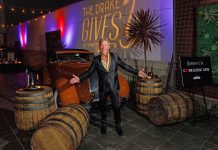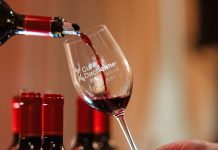By Garry Brown, Executive Director / Orange County Coastkeeper
What is sustainable seafood, why is it important, where you can get it?
Food sourced from the sea has sustained seaside communities since man first learned to fish. It is an important part of coastal living and has strong cultural ties to communities such as Newport Beach. But, over time, as fishing technologies have improved and populations have grown, our appetite for the sea has become unsustainable.
The fishing industry and the Department of Fish and Wildlife have established practices that regulate catch and threatened species have been protected. Size and take limits can only go so far as long as the demand for certain kinds of seafood still remain. Hence, we must become smarter consumers who can make eco-minded decisions about where that salmon filet on their plate originated.
Sustainable seafood is defined by a specific set of standards that protect species populations and ecosystems as laid out by the Marine Stewardship Council (MSC). The MSC’s guidelines require observing wild fisheries closely for population monitoring and tracking the supply chain from its source to dinner the plate.
National Geographic states that “sustainable seafood represents a healthy relationship with our oceans that can endure forever.” Keyword is forever. Let’s face the facts. Tuna, for example, is delicious and I want to keep eating it!
The Monterey Bay Aquarium’s Seafood Watch program is one of the best sources of information to make smart seafood choices. Their pocket guide simply displays which seafood choices are the best, some good alternatives, and then which ones to avoid. Among the best choices are striped bass, Pacific halibut, Yellowfin tuna, and white seabass, all sourced from the US, or one of our neighbors to the north or south. Some to avoid are Pacific cod from Japan or Russia, imported Mahi Mahi, and Bluefin tuna. Download a pocket guide at montereybayaquarium.org.
Not all sustainable seafood is created equal. Lately, there has been significant amounts of “green washing,” which are products marketed as sustainable but truly are not. Skuna Bay salmon, by Norwegian-based Grieg Seafood, is one such product. Marketed as a “craft” endeavor, Grieg’s Atlantic salmon is farmed in net-pen operations that threaten marine life and the ocean ecosystem.
Aquaculture and ocean farming can be done in a way that places precautionary measures to protect coastal ecosystems. For Grieg’s Skuna Bay salmon, their net-pen operations threaten wild salmon migration routes disrupting the natural balance that protects young wild salmon from sea lice. Net-pens not only create an ecologically novel niche for vast blooms of parasitic sea lice that can harm or kill out-migrating salmon smolts, they also provide concentrated biomass that can amplify endemic or imported viral and bacterial pathogen loads in coastal waters.
Part of the month-to-month operation of salmon farms is the killing of “nuisance” marine mammals, as well as the drowning of mammals by entanglement in the net-pens. Farmed salmon are also fed the chemical additive astaxanthin, a synthetic petrochemical dye to make the salmon flesh look more natural and appetizing.
There are a handful of restaurants in Newport Beach and throughout Orange County with Skuna Bay salmon on their menus. Be on the lookout, do not order this fish, and feel free to give your server a little lesson on what you just learned in this article.
Coastkeeper recommends Whole Foods Market for an excellent selection of sustainably sourced seafood. I asked Scott Silka, Assistant Store Team Leader of the Fashion Island Whole Foods Market about why they choose to sell seafood from sustainable sources. Simply put, he said, “It is one of our duties to make sure we are not impacting the environment in a negative way.”
Well said Scott. And full disclosure – they did not pay for placement in this article.





Yada yada yada, nothing new here!, maybe Mr Coastkeeper needs too shine his diner fork on fish with elevated radiation levels from the North Western Pacific (Japans nuclear power plant spill). Another solid stand for the tuna loving eater would be getting yellowfin/bluefin tuna size limits over 20lbs here and in Mexican waters. Many sport boats along the coast boast limits fishing trips but the fish are barely a year old. Oh ya Whole Foods is also a big paying tenant for the Irvine Company’s Fashion Island. If you want the freshest seafood in Newport Beach try Pearson’s Port.